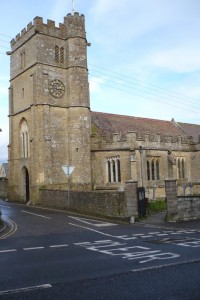
St Giles Church
The Anglican Church of St Giles dates from the 14th Century and is mainly Perpendicular in style, with significant restorations in the 19th Century. St Giles himself was born about 660 AD on the banks of the Rhone where he lived as a hermit. The name became very popular in England where more than 200 churches bear his name, and he is the patron saint of countrymen and travellers.
The north transept of the church appears to have been a private chapel for the lords of the manor, and in the 15th century the Arundells of Chideock Castle built a magnificent black marble tomb and effigy of a recumbent knight, thought to be Sir John Arundell who died in 1545. The family left Chideock after the sacking of the Castle by Cromwell’s troops in the 1640s.
After Catholics ceased to attend St Giles during the reign of Edward VI and Elizabeth I, the Arundells retained rights in their family chapel for centuries after England embraced Protestantism. It is recorded that one RC service was held there each year, and RC priests continued to be interred there until the 19th Century. In the 1960s it was decided to move the organ from its place obscuring the Arundell tomb, and the re-furnishing of the Arundell Chapel and dedication of its new altar took place in 1968 in a service of Christian unity and ecumenism.
For more information on St Giles, see their page on the Chideock and Seatown website.

